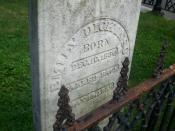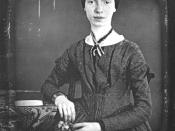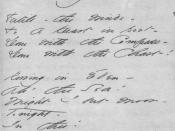Emily Dickinson: The Gothic perspective
Emily Dickinson's majority of her pomes that I found they were mainly focused on death and the progression to death and much of what was described by many as "Gothic". In "Because I Could Not Stop for Death" (Franklin 219), Emily Dickinson uses remembered images of the past to clarify infinite conceptions through the establishment of a dialectical relationship between reality and imagination, the known and the unknown. From the viewpoint of eternity, the speaker recalls experiences that happened on earth centuries ago. In her recollection, she attempts to identify the eternal world by its relationship to temporal standards as she states that "Centuries" in eternity are "shorter than the day" (20 - 21). Understanding the incomprehensible often depends on an appreciation of the progression of the stages of existence. By recalling specific stages of life on earth, the speaker not only settles her temporal past but also views these happenings from a higher awareness, both literally and figuratively.
Figuratively the poem may symbolize the three stages of life, "School, where Children strove" may represent childhood; "Fields of Gazing Grain", maturity; and "Setting Sun" old age (Renfroe). Viewing the progression of these stages life, to death, to eternity-as a continuum invests these isolated, often incomprehensible events with meaning. From her perspective, the speaker comprehends that life, like the "Horses Heads", leads "toward Eternity".
In a reading of Emily Dickinson's poem, "Twas like a Maelstrom, with a notch" (Franklin 196), the speaker describes a nightmare in which a vortex approaches continually nearer. The maelstrom whirls in a "boiling Wheel" about the speaker, causing her "Agony". We perceive the Gothic as an essentially language-made genre. Emily Dickinson's supernatural language establishes the word "goblin" as a case in point; the word allows us to see the multipurpose of...


